PROTECT YOUR DNA WITH QUANTUM TECHNOLOGY
Orgo-Life the new way to the future Advertising by AdpathwayThe joy that annuals provide each year is unmatched, but with most being sun-lovers, it’s hard to know which ones thrive in shade. However, summer shade annuals are out there, and there are plenty of options for the dappled sun to full shade garden.
Before we begin, make a note of which type of soil exists in your garden. Is it mesic, with consistent, even moisture throughout the year? Or is it xeric, with constant dryness? Maybe it’s boggy and wet all year long.
Understanding the conditions in your shade bed helps you determine which perennials and annuals to plant there. Couple this with the knowledge of your degree of shade – dappled sun, partial shade, or full shade – and you’ve got a good checklist to get you a thriving shade garden.
Tom Thumb Blend Balsam

Tom Thumb Blend Balsam Seeds
Got the Blues Pansy

Got the Blues Pansy Seeds
Lambada Bee Balm

American Bellflower
 Brighten the gloom with light lavender blooms.
Brighten the gloom with light lavender blooms. For bright lavender-blue annual blooms that enjoy shade and full sunlight, American bellflower is a good option. Plant this one at the back of a shade garden, so its two to six foot stems add some dimension to your design. Then plant a cascade of successively shorter plants in front.
Tons of bees, butterflies, and skippers appreciate bellflowers. These North American natives are particularly important for leafcutter bees and bumblebees. With a wide range, from eastern Canada to the north central and eastern US, this flower is great for summer gardens across the continent.
Carolina Geranium
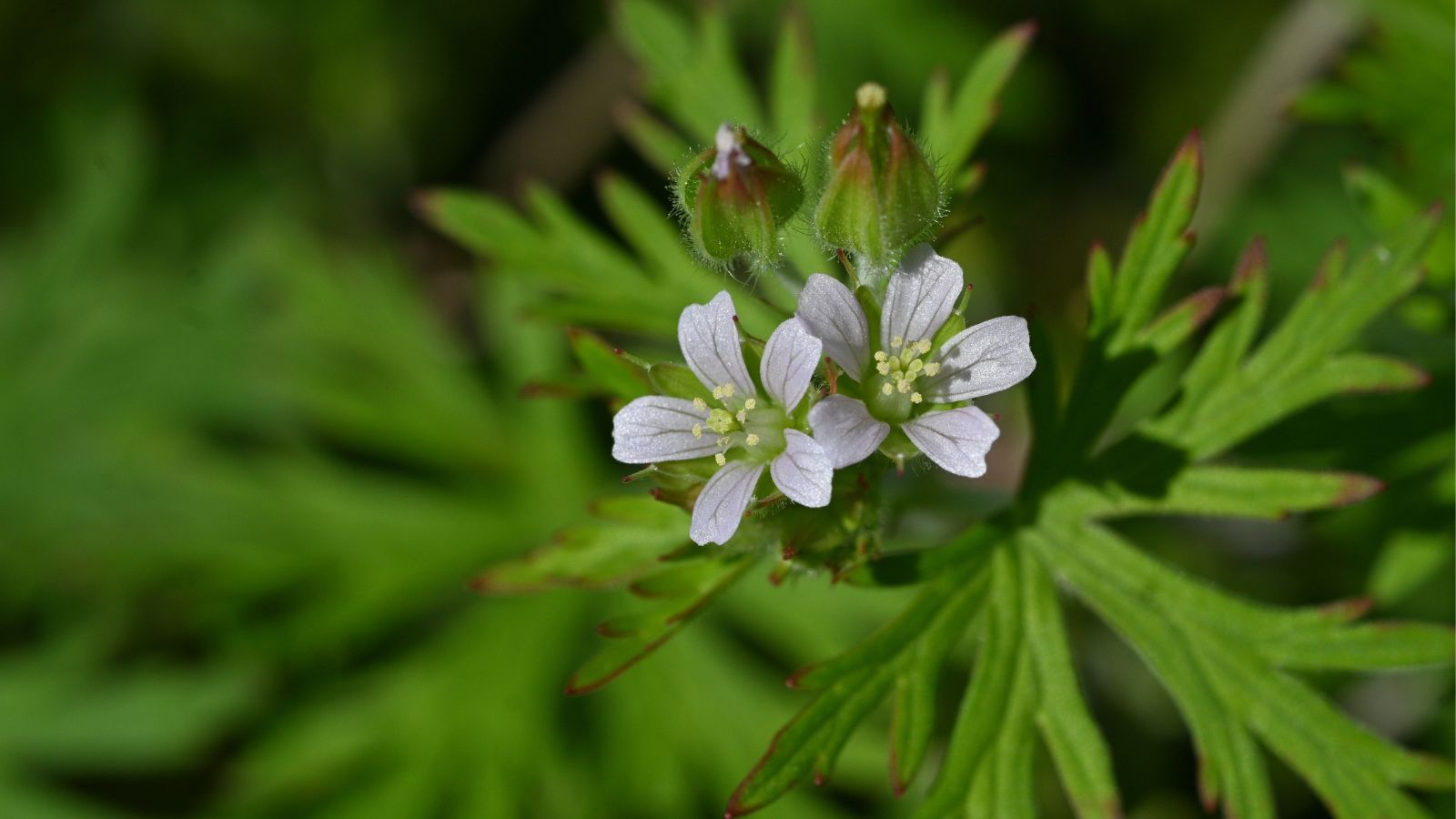 Flowers in summer and autumnal foliage make these geraniums a winner.
Flowers in summer and autumnal foliage make these geraniums a winner.These geraniums grow minute pinkish blooms among their lobed leaves, and they’re amazing for shade beds. They handle mesic and xeric, sometimes rocky conditions. Clay soil is no issue either. In fact, people living in its native range may know it as a common weed. It makes a striking mass planting, when grown intentionally.
Carolina geranium starts blooming in spring and continues doing so through fall. After the blooms fade, interesting beaked seed pods form. As fall nears, the foliage turns from bright green to umber, putting on a bright autumnal display. Propagate this plant via its seeds, which don’t require any pre-treatment. Simply throw them out and let them grow.
Garden Balsam
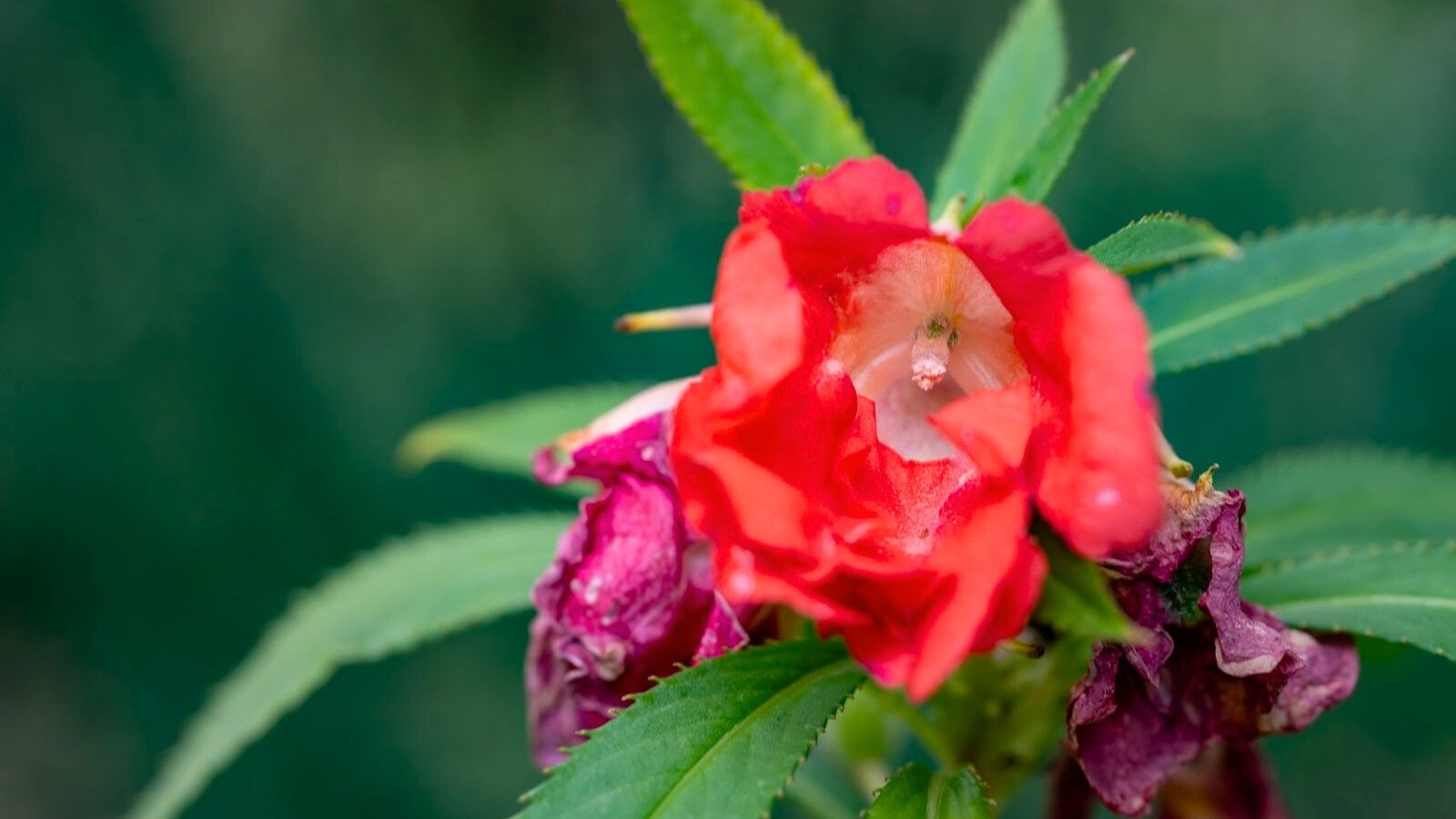 This impatiens relative shines in shade or sun.
This impatiens relative shines in shade or sun. One of the most beloved cultivated plants is balsam. A member of the Impatiens genus and a native of parts of India and Sri Lanka, people choose this plant due to its vigorous but non-invasive nature. Because it is annual, there isn’t much concern about unwanted spread as it dies when frost arrives.
These shade annuals come in shades of pink and red, and bloom successively from spring through fall. In summer, balsam is at its peak. While these flowers bloom best in full sun, they perform just as well in shady areas where summers are hot, and the sun is intense.
If you want to experiment, start Tom Thumb Blend seeds along with your other plants in winter. Then transplant them into a planter one to two weeks after your last frost and move the container as needed to promote better blooms.
Fernleaf Phacelia
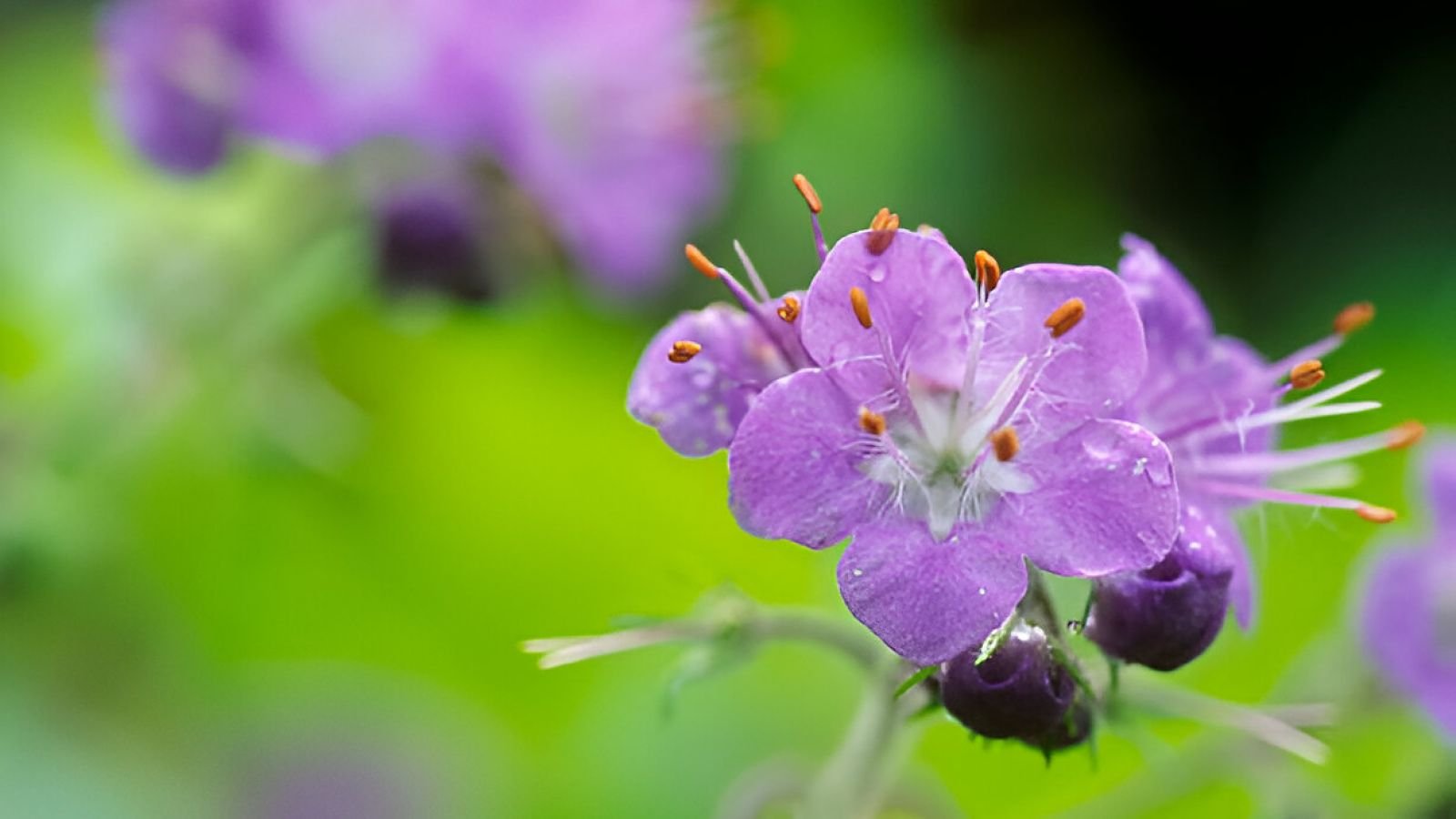 This phacelia is perennial in zones 5-8 and annual in extremely cold or hot climates.
This phacelia is perennial in zones 5-8 and annual in extremely cold or hot climates.Lacy phacelia – known for its capabilities as a cover crop – is not the same plant as fernleaf phacelia. Though these two plants share the same genus, they have different habits and botanical structures that distinguish them from one another. Fernleaf phacelia is a strictly summer bloomer with blue to purple flowers that have a saucer shape.
This small herbaceous plant is not annual everywhere, though it is in many areas. It is classed as a biennial within its hardiness range, but dies back in extremes outside of it. Its velvety green leaves are great in shade gardens. With a range in the midwest to eastern regions of the US, it thrives and acclimates to varying conditions.
Annual Phlox
 Phlox thrives in-ground or in containers.
Phlox thrives in-ground or in containers. Adaptable phlox is the perfect plant in both full sun and shady gardens. Due to its floriferous nature, annual phlox has been bred extensively and there are numerous varieties and cultivars out there with colors ranging from pink to white, with red and purple as options too.
Starting in spring, phlox blooms open, and they continue to do so until fall. As the seasons go on, the tall, erect stems form mounds covered with blooms. They also grow nicely in partially shaded containers and hanging baskets. As central to eastern US natives, they perform well in differing conditions as long as the soil is well-draining.
Wishbone Flower
 Delicate blooms in rich colors make wishbone flower stand out.
Delicate blooms in rich colors make wishbone flower stand out. Torenia fournieri gets its common name, wishbone flower, from the tubular trumpet shaped blooms with coloring reminiscent of wishbones. They are deep purple, lavender, white, and yellow. The darker color lines the bottom lip, giving them their signature look. These annuals bloom in summer, and again in fall.
Wishbone flowers are not native to North America, but they are not invasive. As Asian natives, they’ll live through the spring and summer, and begin to fade as fall rolls around. Provide plenty of partial to full shade and rich, well-draining soil to give them a good foundation for summer’s flowering.
Pansy
 Cheerful pansies are a beloved sight in spring.
Cheerful pansies are a beloved sight in spring.Pansies are some of the cutest and most colorful flowers that come in shades of tricolored white, yellow, blue, and purple. The little “faces” of pansies pop out in spring and continue through summer. As short statured plants, they make a lovely low border, or mass planting. Because they are so beloved, they are widely cultivated.
If you love true blue, go for Got the Blues pansies that come in varying white and blue patterns. For more color, choose a blend of Swiss Giants. These shade annuals are up to two and a half inches across, in pink, blue, white, red, and yellow. Because pansies are cold hardy, they’re some of the best winter sowers, and some of the first to open in early spring.
Ageratum
 Pollinators flock to fuzzy ageratum blooms.
Pollinators flock to fuzzy ageratum blooms.Growers in warmer climates will love the purple fuzzy inflorescence of ageratum. There are other types with white and pink blooms as well. These plants are great for full sun and partial shade areas, and taller cultivars make great cut flowers as they hold their color for an extended period. Shorter types form mounds that flourish and fade with the seasons.
As Central American natives, these are semi-drought tolerant. Give them soil amended with compost to provide ample nutrients for the year. Butterflies and other pollinators love this plant, flocking to it in the seasons just before pupation begins in temperate regions. Some cultivars even withstand pressure from rabbits, deer, and phytophthora.
Wax Begonia
 Semi-succulent begonias look lovely at the front of garden borders.
Semi-succulent begonias look lovely at the front of garden borders.South American plants are often relegated to the indoors, but not wax begonias. These are common bedding plants that bloom in spring through fall, in red, white, and pink hues. Hailing from the Carribbean and parts of Africa as well, begonias are suited best for the temperate world. However, they are perfect annuals elsewhere.
As these plants flourish through warmer seasons, they mound and cluster together. Their semi-succulent leaves shine in the full sun or the shade. As long as they are established, they withstand even full shade. People love to plant wax begonias on garden borders, in window boxes, or along wooded borders.
Calibrachoa
 Beloved by hummingbirds, calibrachoa is a hanging basket and bedding favorite.
Beloved by hummingbirds, calibrachoa is a hanging basket and bedding favorite.Million bells, aka trailing petunia, is another popular bedding plant that loves warmer parts of the world. With native origins in South and Central America, it’s easy to see why this is the case. You can expect to see hundreds of flowers per plant from late spring to the first frost. The hummingbirds will thank you too!
Million bells come in so many different colors. Some cultivars are variegated, while others are monochromatic. Pick a type that works in the garden you’re planting it in. While these prefer full sun, they can also grow in partial shade. In shady areas there will be less flowers, but because they already bloom so much, this shouldn’t be a problem.
Lemon Beebalm
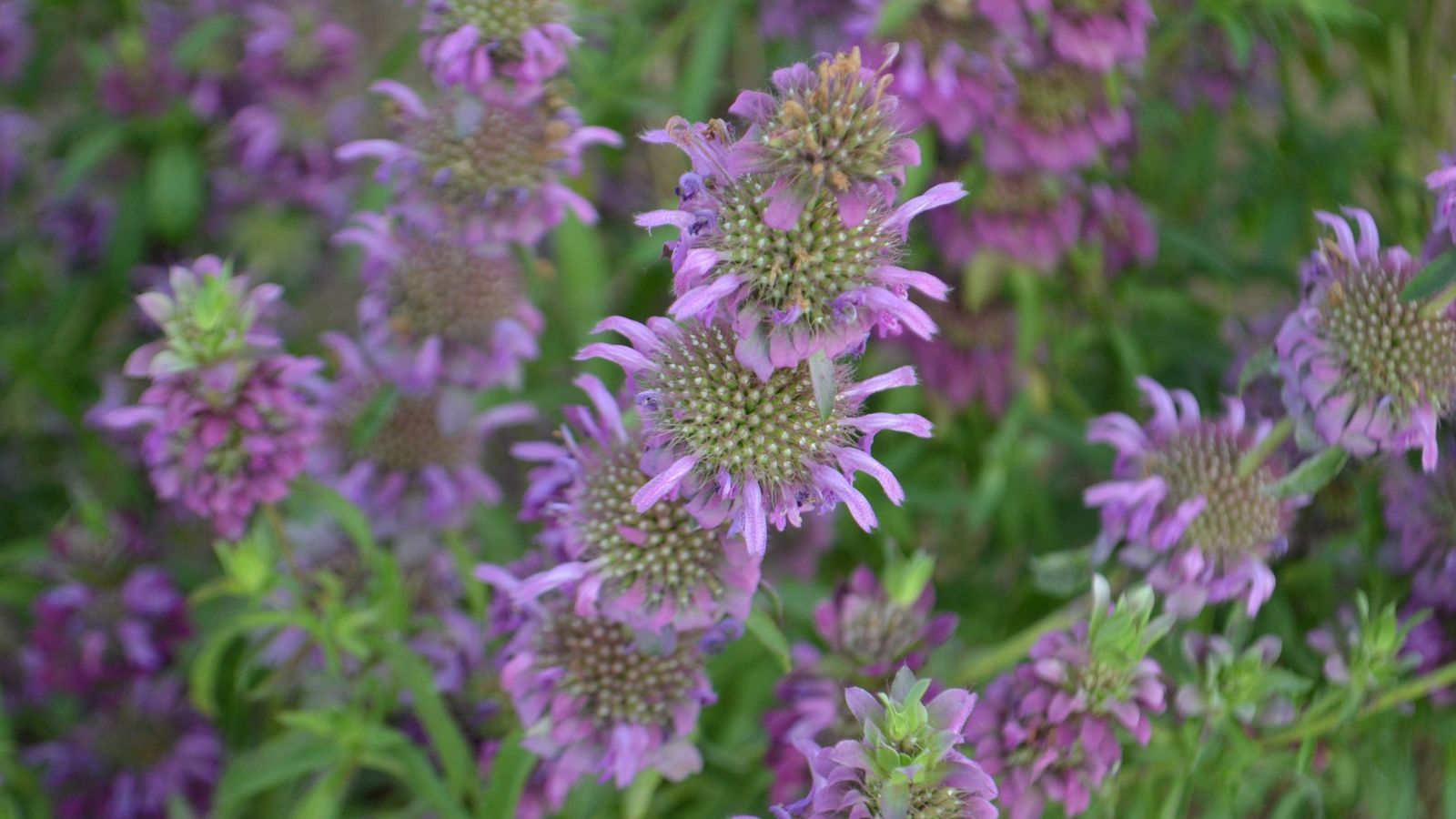 Lemon bee balm reseeds freely and makes a tasty tea.
Lemon bee balm reseeds freely and makes a tasty tea.For dryer gardens in semi-shade, look for lemon bee balm seeds. The tiered purple flowers with greenish bracts are a stunning sight, especially to hummingbirds, bees, and butterflies. The leaves and flowers make a light, minty tea that pairs nicely with a chamomile or yarrow.
Plant yours in a wild area along a shady border, and they’ll seed out and bloom year after year. This is a beloved southern wildflower in the US, and varies in size depending on conditions. With more rain, for instance, plants top out at five feet tall. If you can’t find M. citriodora in your region, grow the similarly shaped Lambada bee balm instead.
Missouri Violet
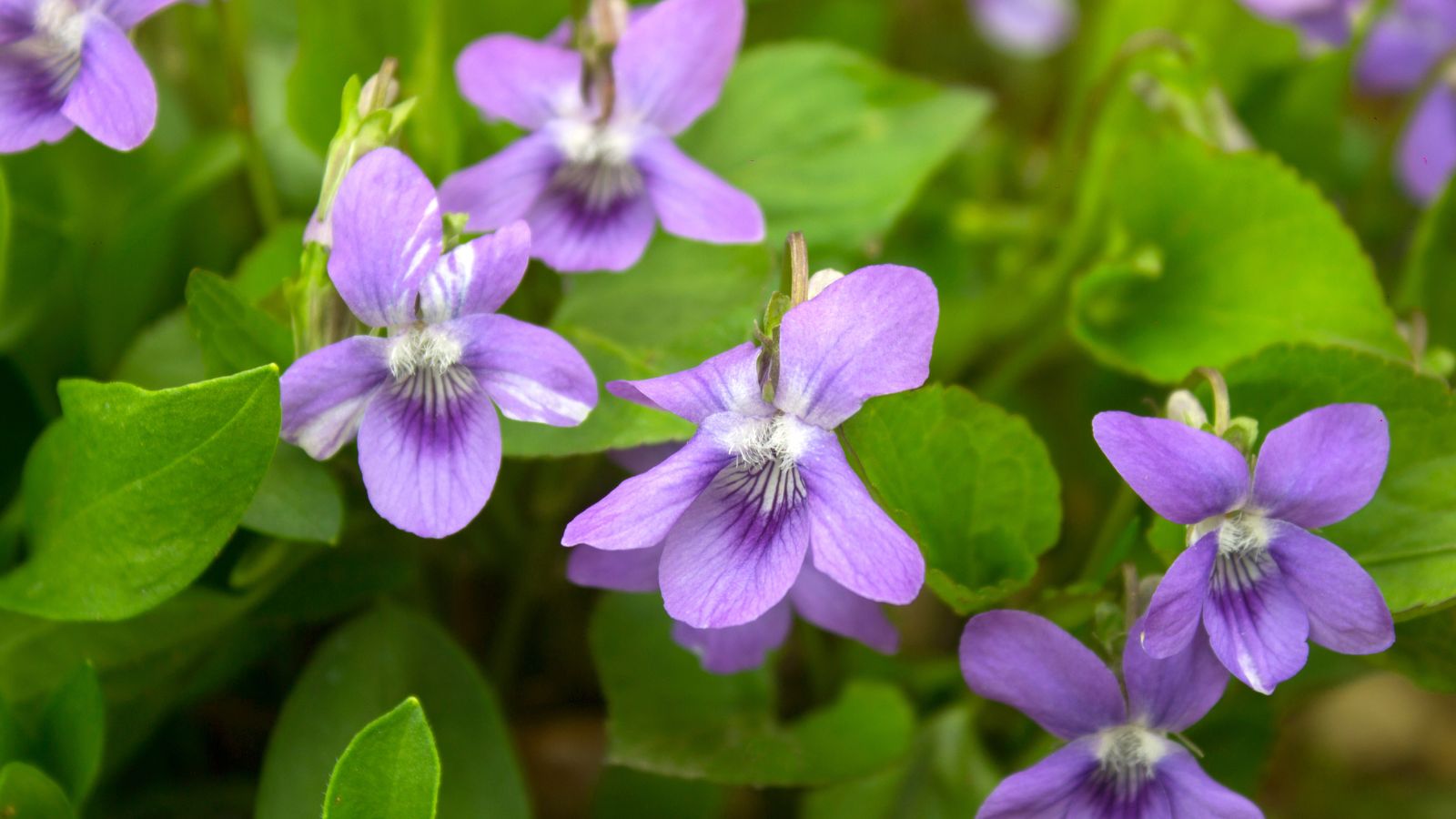 Support native bees with this diminutive violet.
Support native bees with this diminutive violet.I’m a huge fan of violets, and the Missouri native violet is no exception. These plants grow in any light conditions, from full sun to full shade. The small purple flowers bloom just above and below its heart-shaped leaves, bringing in specialized native bees, and providing a host site for butterflies.
In large shade beds, violets spread quickly and evenly, covering the ground with deep green foliage from spring through to the first frost. In extra hot and cold zones, this is an annual plant. However, it is perennial in many parts of the US. The flowers are often used in perfumery for their light, fresh scent. They’re also edible.
Rose Vervain
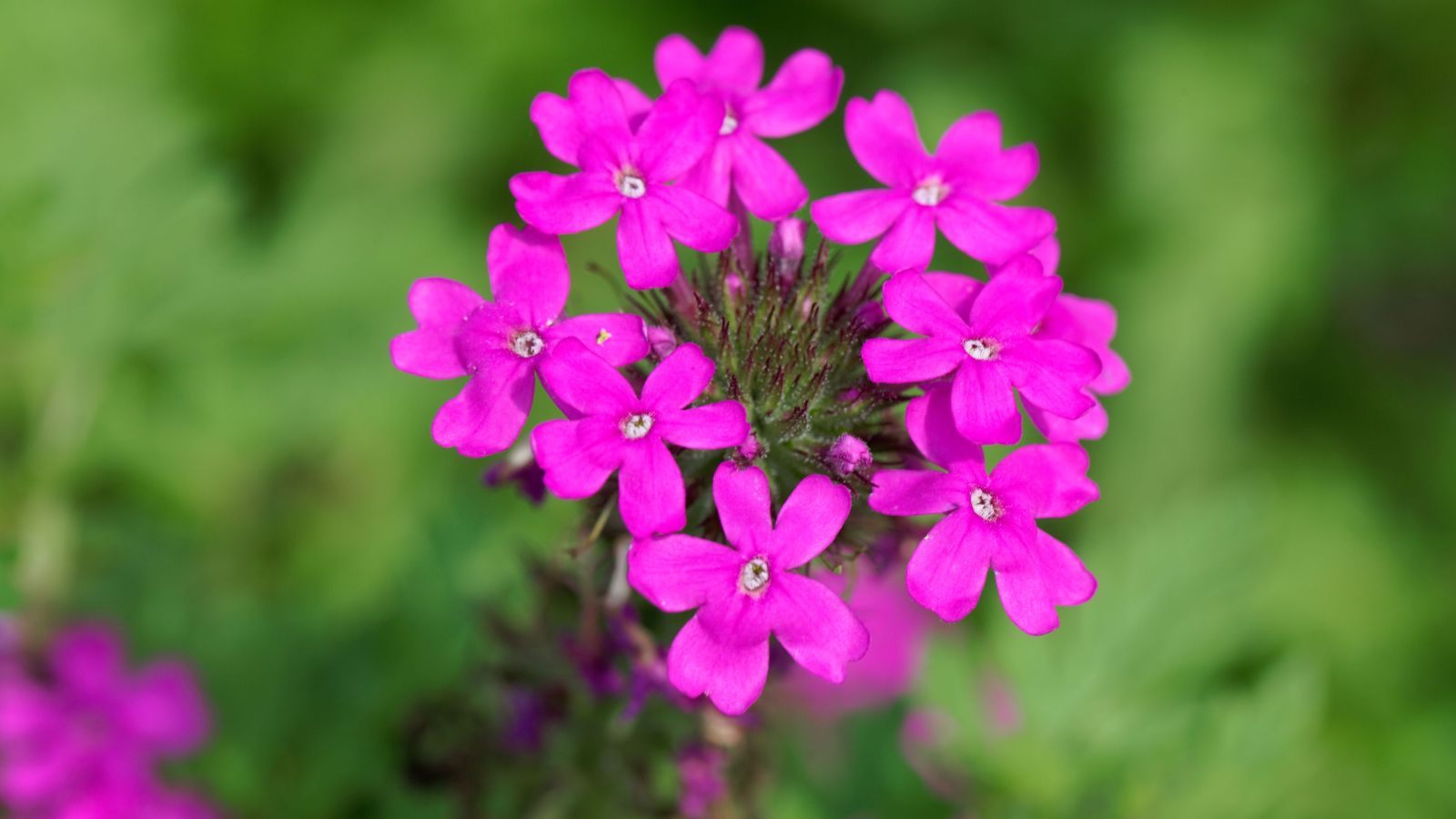 Try rose vervain as a ground cover in dry shade.
Try rose vervain as a ground cover in dry shade.Native to the eastern and south central United States, rose vervain is a mostly annual, sometimes perennial plant with lovely purple or white compound flowers. It is best grown in light shade, and blooms from spring through summer. Because it spreads, it’s a great ground cover in areas with dry soil.
Place this one in your shady rock garden, or a meadow, and watch butterflies sip on the nectar it provides. The drought tolerance of this one can’t be understated, and bees who forage in hot seasons benefit from its presence. In colder regions, you’ll see it die back in early fall, but in temperate areas it remains through winter.


 3 weeks ago
42
3 weeks ago
42





















 English (US) ·
English (US) ·  French (CA) ·
French (CA) ·